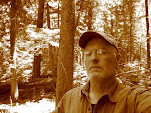I put in today more out of urgency than want. Sometimes, I fear the passing of the day or seasons without being able to see the changes. The spring migration is on, and what is in the marsh changes with each day. I also know that all of this may change all too soon, that I may be one of the last to experience the spartina marsh. New research suggests faster rising ocean levels than were previously predicted. This is not a surprise to me. I am an engineer and I know just enough about mathematical systems modeling to know that unexpected intricacies can make major differences. Modeling nature is a supremely difficult task.
Spartina marshes hover right at the top of high tide. The annual growth of grasses die and compost themselves into the marsh, building height at about the same rate that the marsh compacts and loses that gain. When I look at old maps, I find that the spartina is remarkably stable, islands in the rivers have changed little in shape over the last 125 years. I expect that a rapid rise in ocean level will upset the delicate balance.
The tide is falling when I set out. The wind is out of the South, but lighter than predicted. The clouds reach all of the way to the surface and I paddle in a thin fog that obscures a lot of distant stuff that I don't want to look at anyway. Great egrets have returned and are easily spotted, scattered around the marsh as I go. I saw my first two just six days ago. Near the river mouth is a large flock of brandts honking hoarsely as if they were sick Canada geese. I pass a number of swans, all paired up but not yet nesting and aggressive. At the upriver end of the marsh, a loud splash to my right catches my attention. I look for a fallen clump of spartina but find, instead a beaver eyeballing me. I'm a bit too far from the creek and forest to expect a beaver sighting, but there it is. A bald eagle flies by and vanishes in the fog. The nearby osprey nest, which held two bald eagles on my last trip here, now has an osprey in it, as does the downriver nest. Near taking out, the recently exposed mudflats have drawn in a large number of yellow-legs. Some of them feed by picking at the mud while a few others run through the water with their bills skimming the surface.
The take out is mud now. I slide the canoe over the greasy surface, my boots going in about 8 inches, but not sticking as long as I keep moving. I have washing to do.
Hike to Cape Alava
2 days ago




2 comments:
Scott, your post today reminds me of all the little places I have enjoyed seeing, that are now irreparably changed.
Just one: When I lived in Branford, there was a little creek to the right of the railroad bridge, just as one turned off BPR and onto 142. I would enjoy that little glimpse of the vivid green moss that carpeted the banks, deep into the trees. Then the overpass was improved, which meant they cut all the trees, scraped off all the vegetation, routed the water through a hidden culvert. It just -disappeared.
So many places like that. Old orchards, farmland, shoreline, swallowed by progress, and some soon to be gone from climate change.
I'm glad you share your trip through the spartina marsh, even as you eulogize it.
Your post gave me beautiful visuals of the place and the creatures you saw. How have I missed your posts before. Nice to read your canoe sightings.
Post a Comment